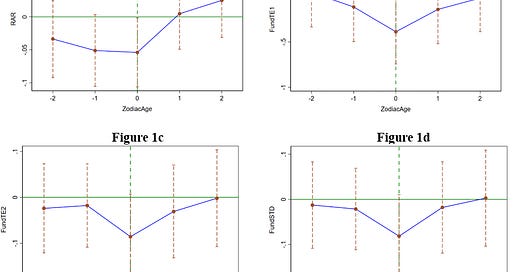I have written about Chinese people and their superstitions before. You can see the effect of Chinese superstition in the Hong Kong real estate market, for example. But homebuyers are people like you and me. In a country where superstition and a believe in zodiac signs is widespread, it isn’t all too surprising to find such aberrations. What about professional investors like fund managers? After all, aren’t they supposed to be the ‘smart money’?
Of course, they aren’t. Fund managers are people too, so they are often superstitious as well. And that means they change their behaviour in times that they consider riskier. We are in the middle of the year of the snake and apparently, if the zodiac sign is the same as your birth sign that is supposed to be an unlucky year for you (I know nothing about Chinese zodiacs, so let me know if this is wrong).
Shenglan Chen and his colleagues tested this superstition with Chinese fund managers. The charts below show risk taking by fund managers in the two years before and after their zodiac year. The top left chart (Figure 1a) shows risk-adjusted fund returns, on the top right (Figure 1b) and bottom left (Figure 1c) we have two different measures of tracking error and on the bottom right (Figure 1d) we have the volatility of fund returns.
Relationship between fund manager zodiac and risk taking in Chinese funds
Source: Chen et al. (2024)
For every risk metric we see that during a fund manager’s zodiac year, risk taking is reduced. The fund manager is more prone to hugging a benchmark and reducing relative risk as well as absolute risk and fund volatility. Better be safe than sorry and let’s take more risks next year when my zodiac promises to be more fortunate.
As I said, it’s the smart money…





I have lived in Malaysia where the Chinese are a very big minority (approx.35%), and I can tell you that everything they do is in accordance to some supestion, usually the Zodiak. And by the way, in Malaysian primary schools, the Chinese children are invariably the best performing, followed by the Indian, followed by the Malay. It is getting that way here too.